Blanket Flower, known scientifically as Gaillardia aristata, is a hardy perennial of warm hues, from radiant reds to golden yellows, evoking the essence of a sunlit meadow. It hails from North America’s prairies and grasslands, adapting well to various environments, particularly thriving in USDA hardiness zones 3 through 9. Growing Blanket Flower from seed is relatively easy for U.S. gardeners.
It typically reaches a mature height and spread of about 2 to 3 feet, making it a popular choice for gardeners looking to add a splash of color to their landscapes.
When to Start Growing Blanket Flower from Seed

Depending on your hardiness zone, you’ll want to make sure that you start growing Blanket Flower from seed early to make the most of the growing season.
In Zones 3-5
Begin sowing seeds indoors about 6-8 weeks before the last expected frost date. This early start is crucial in these cooler climates to ensure the seedlings are well-established before transplanting outdoors. Once the threat of frost has passed, typically in late spring, you can sow the seeds directly into the garden.
In Zones 6-8
Start seeds indoors approximately 4-6 weeks before the last frost date. This timing allows the seedlings to grow strong enough for outdoor conditions. You can also directly sow seeds into the garden after the last frost.
In Zones 9-12
In warmer climates, seeds can be started indoors in late winter. Direct Sowing: Direct sowing in these zones can be done in early spring, taking advantage of the longer growing season.
How to Start Blanket Flower Seeds
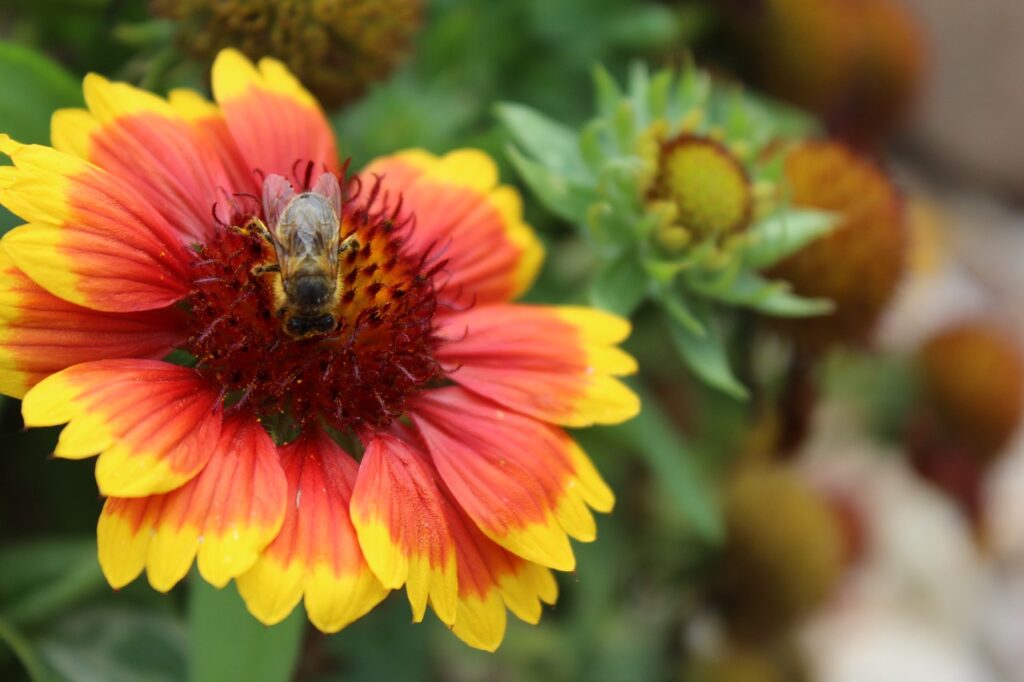
Starting Blanket Flower seeds indoors can be a rewarding process, setting the stage for a vibrant garden display. Here’s a step-by-step guide to ensure successful germination:
Choosing or Making a Seed Starting Mix
Blanket Flower seeds thrive in a light, well-draining seed starting mix. You can create an ideal mix by blending equal parts of peat moss, vermiculite, and perlite. This combination provides the necessary aeration and moisture retention for optimal seed germination.
Choosing Containers for Starting Seeds
Opt for relatively large containers, such as cell trays or small pots, that are at least 3 inches deep. This size accommodates the root growth of Blanket Flower seedlings, allowing for healthy development before they’re transplanted outdoors.
Depth to Plant
Plant the seeds at a shallow depth of about 1/8 to 1/4 inch. Covering the seeds with a thin layer of soil ensures that they receive enough light for germination while retaining the moisture they need.
Moisture Requirement for Seeds
Maintain a consistently moist but not waterlogged soil environment. Regular misting or light watering will keep the soil at the right moisture level without oversaturating it, which is crucial for preventing seed rot.
Optimal Temperature for Germination
The ideal temperature range for growing Blanket Flower from seed is between 65°F and 70°F (18°C to 21°C). Maintaining this temperature in your growing environment will promote effective and timely seed germination.
Light Requirements for Germination
Blanket Flower seeds require good light to germinate effectively. Place your seed trays or containers in a well-lit area or under grow lights to ensure they receive adequate light without direct exposure to harsh sunlight.
Time to Germination
Under optimal conditions, expect the seeds to germinate within 14 to 21 days. However, this time frame can vary based on environmental factors like temperature and light.
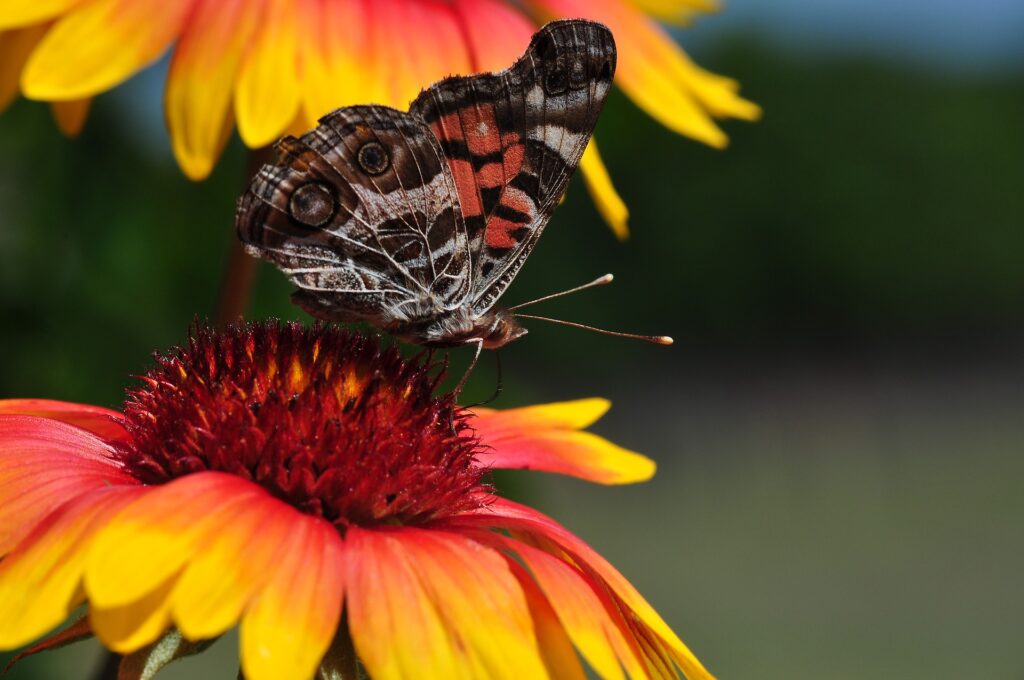
How to Prepare Garden Bed for Planting Blanket Flower
Properly preparing the garden bed is essential for the thriving growth of Blanket Flower (Gaillardia aristata). Here’s a detailed guide on how to prepare your garden:
Choosing a Location
Blanket Flower thrives in full sun. Select a location that receives at least 6-8 hours of direct sunlight daily. Adequate sunlight is crucial for the best flowering.
Choose an area with well-drained soil. Blanket Flower is drought-tolerant and performs poorly in waterlogged conditions. It prefers a balance where the soil retains moisture but drains excess water efficiently.
This plant is adaptable to a range of soil types but flourishes in sandy or loamy soils. It prefers a slightly acidic to neutral pH. If your soil is heavy clay or very sandy, consider amending it with organic matter to improve texture and nutrient content.
- Big Blooms Start with Big Bloom: Achieve vibrant, healthy blooms with our…
- FOR USE ON: Use Espoma Organic Bloom! for all flowering plants; annuals &…
- USE ON: Use Flower-tone organic fertilizer for flowers like annuals,…
Preparing the Garden Bed
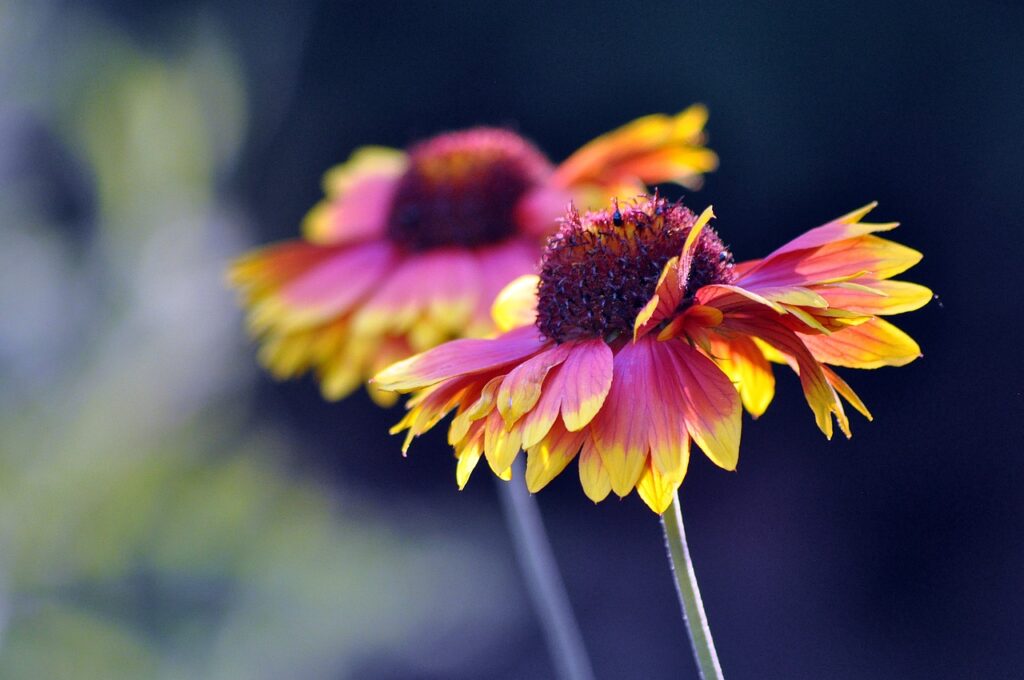
Remove weeds, grass, and debris from the planting area. This ensures the flowers won’t have to compete for nutrients and space.
Loosen the soil gently using a garden fork if it is compacted.
If the soil is too clayey or sandy, mix in compost or well-rotted manure to enhance its structure and fertility. However, excessive amending is not necessary as Blanket Flowers are not heavy feeders.
Use a rake to even out the surface. This step is important for uniform seed sowing and planting.
Lightly water the prepared bed. This step is crucial if you’re sowing seeds directly, as it provides a moist base for the seeds to start.
Direct Sowing Blanket Flower
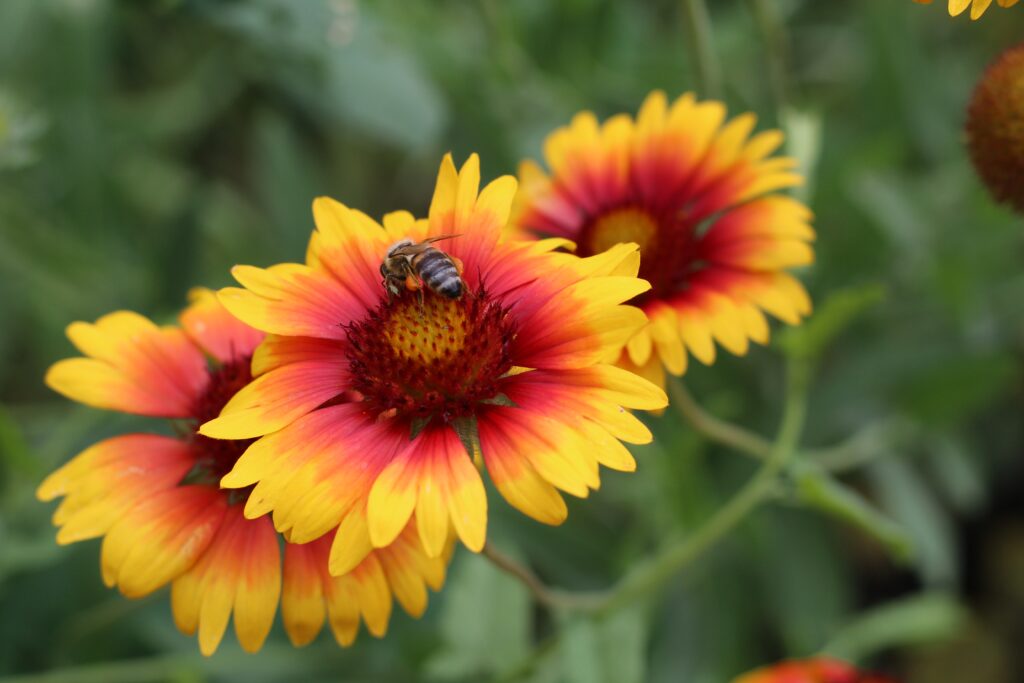
Direct sowing Blanket Flower seeds in your garden is a straightforward process. Follow these steps to ensure a successful planting:
Sow the seeds just below the surface of the soil, about 1/8 to 1/4 inch deep. This shallow depth allows the seeds to receive sufficient light for germination, which is crucial for Blanket Flower.
Scatter the seeds lightly over the prepared area or place them in rows. If sowing in rows, space the seeds about 6 to 8 inches apart. Blanket Flowers can tolerate a bit of crowding, but proper spacing ensures better air circulation and healthier growth.
After sowing, gently water the area. Use a fine mist to moisten the soil without disturbing the seeds. Ensure the soil remains consistently moist but not waterlogged until the seeds germinate. Once the seedlings are established, Blanket Flowers can handle drier conditions.
Once the seedlings emerge and reach a height of a few inches, thin them out. Leave the strongest plants, ensuring they are spaced about 10 to 12 inches apart. Proper thinning is essential to provide each plant enough space to grow and develop fully.
Applying a light layer of organic mulch around the seedlings can be beneficial. Mulch helps retain soil moisture, regulate soil temperature, and suppress weed growth. Avoid heavy mulching; a thin layer is sufficient as Blanket Flowers prefer a drier environment.
When To Plant Out Your Blanket Flower Starters
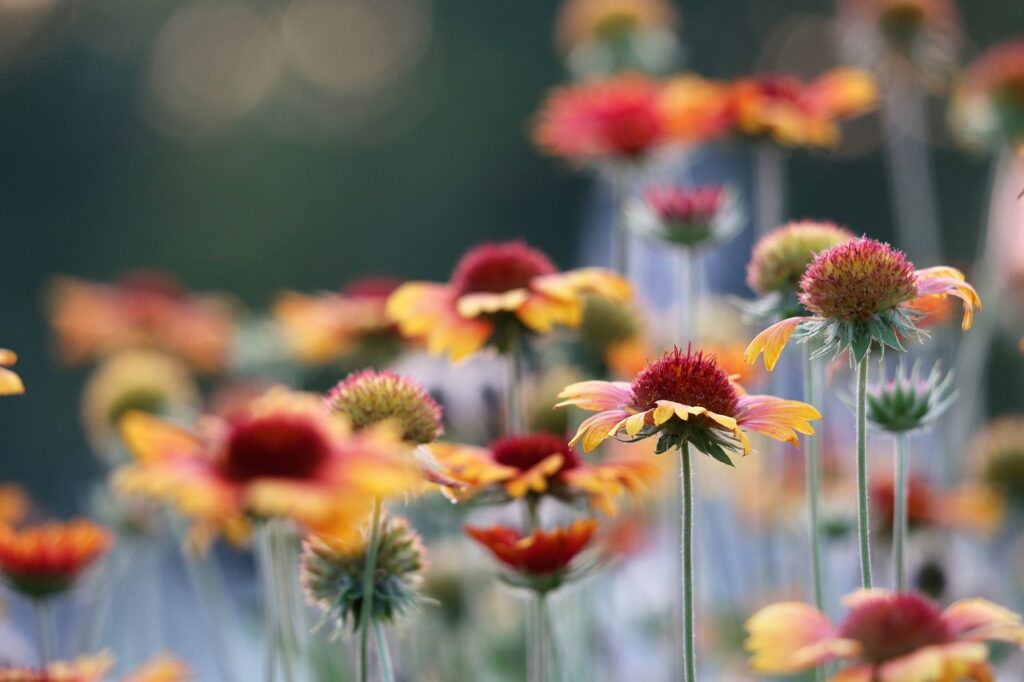
Determining the right time to transplant Blanket Flower starter plants is crucial for their successful growth in the garden or larger containers. Here’s how to identify when they are ready:
Size and Growth: Blanket Flower starters are usually ready for transplanting when they are about 3-5 inches tall. At this stage, they should have several sets of true leaves, indicating a strong, healthy growth.
Root Development: Check the roots by gently removing a plant from its starter container. If the roots are well-formed and spread throughout the soil but not excessively crowded, the plant is ready for transplant.
Planting Out Blanket Flower Starters
Transplanting Blanket Flower starters into the garden requires careful attention to ensure their healthy establishment.
When transplanting, ensure the root ball of the starter plant is placed at the same depth as it was in the container. Planting at the correct depth is crucial for the health of the plant.
Space the plants about 12 to 18 inches apart. This spacing allows each plant enough room to grow and develop without crowding, ensuring proper air circulation and sunlight exposure.
After planting, apply a thin layer of organic mulch around the base of each plant. Mulch helps retain soil moisture, regulate soil temperature, and suppresses weed growth. Be mindful not to pile mulch against the plant stems to prevent rot.
Water the plants thoroughly after planting. This helps settle the soil around the roots and provides the necessary moisture for the plants to start establishing themselves. Ensure consistent moisture, especially during the first few weeks after planting.
Caring for Blanket Flower Plants
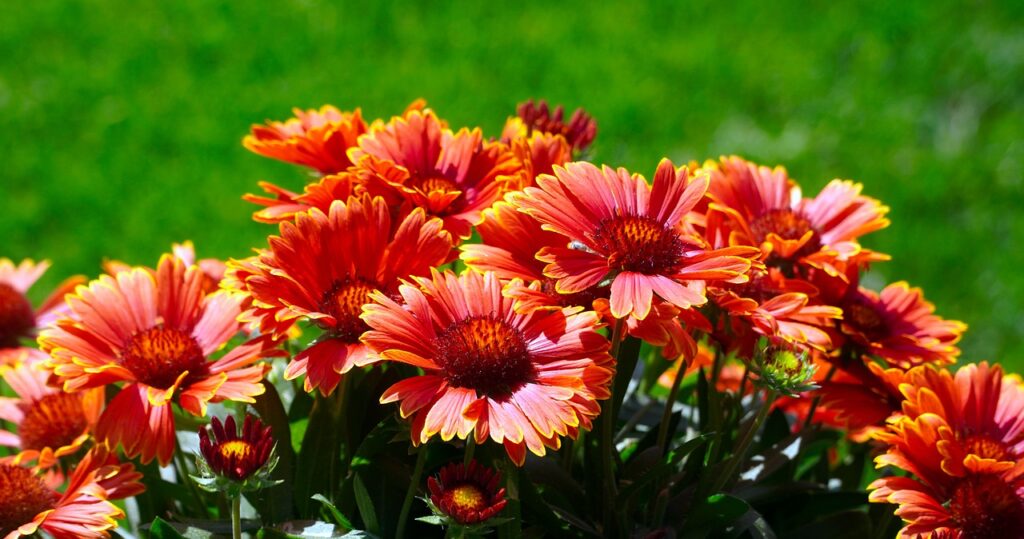
Caring for Blanket Flower involves a balance of adequate watering, timely feeding, and regular weeding. These plants are relatively low-maintenance, but attentive care, especially in the first year of growth, ensures vigorous plants and beautiful blooms.
Watering
Blanket Flower is drought-tolerant once established, but regular watering is important, especially during dry spells and in the first growing season after planting. Water deeply once a week, allowing the soil to dry out slightly between waterings. Avoid overwatering, as Gaillardia does not like soggy soil.
Feeding
Feed Blanket Flower with a balanced, all-purpose fertilizer in the early spring as new growth appears. If your soil is particularly poor, a second feeding in the early summer can be beneficial. Avoid high-nitrogen fertilizers, as they can encourage foliage growth at the expense of flowers.
Weeding
Keep the area around your Blanket Flower plants free of weeds. Weeds compete for nutrients and moisture, which can hinder the growth of your Gaillardia. Mulching can help suppress weed growth and maintain soil moisture.
Tips and Tricks for Growing Blanket Flower
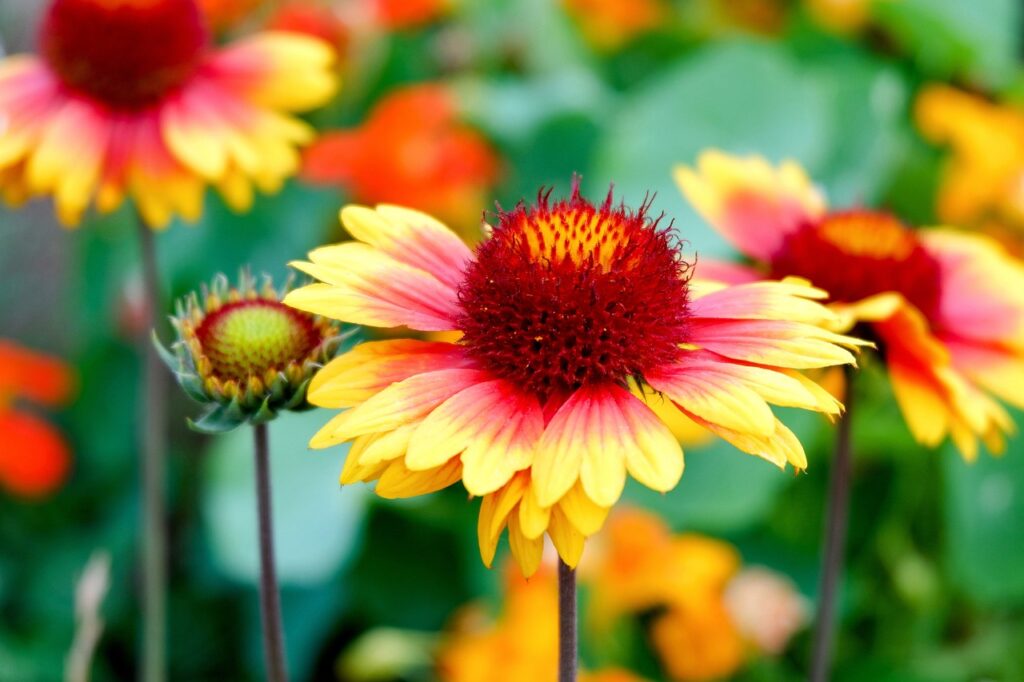
Successfully growing Blanket Flower involves a few key practices:
Sun Exposure: Ensure your Blanket Flowers get plenty of sun. They bloom best in full sun conditions.
Soil Conditions: They thrive in well-draining soil and can tolerate poor soil conditions. Avoid overly rich or waterlogged soil.
Deadheading: Regularly deadhead spent flowers to encourage continuous blooming throughout the season.
Division: Every 2-3 years, consider dividing your Blanket Flower plants to maintain their vigor and prevent overcrowding.
Winter Care: In colder zones, provide a layer of mulch for winter protection. In warmer zones, cut back the plants in late fall to tidy up the garden.
Remember, while Blanket Flowers are hardy and adaptable, providing them with the right conditions and care will result in a more vibrant and long-lasting display in your garden.
How to Harvest Blanket Flower for Cut Flowers
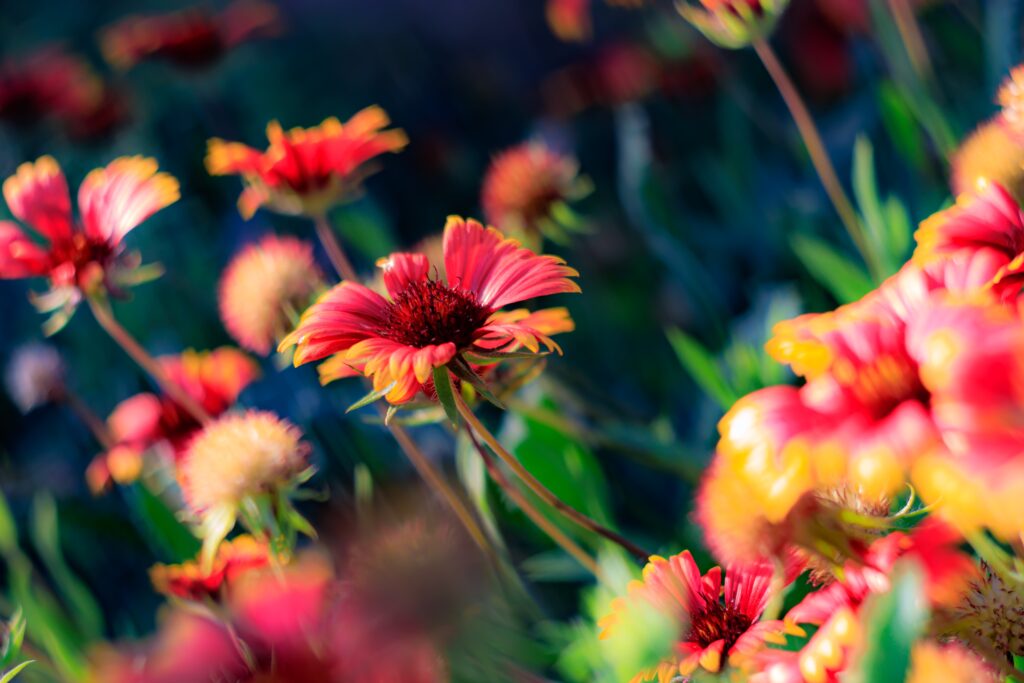
Harvesting Blanket Flower for cut flowers is simple and can bring the beauty of your garden indoors. Follow these steps:
Choose the Right Time: Harvest in the early morning when the flowers are most hydrated. Look for blooms that have just fully opened for the longest vase life.
Cutting: Use sharp scissors or pruners to cut the stem at an angle. Cutting at an angle increases the surface area for water uptake.
Immediate Care: Place the cut flowers in a bucket of water immediately after cutting to keep them hydrated.
Prepping for Display: Before arranging them in a vase, remove any leaves that will be below the waterline to prevent rotting.
Changing Water: Change the water in the vase every two days to keep the flowers fresh.
How to Harvest Blanket Flower Seeds for Replanting
Collecting seeds from your Blanket Flowers allows you to propagate new plants for the next season:
After the blooming period, allow the flower heads to dry out on the plant until they turn brown.
Gently cut the dried flower heads and place them in a paper bag.
Allow the seed heads to dry further indoors in a warm, dry place.
Break apart the dried seed heads over a container to collect the seeds.
Store the seeds in a cool, dry place in a paper envelope or a sealed container.
What to Expect from Blanket Flower Over Winter
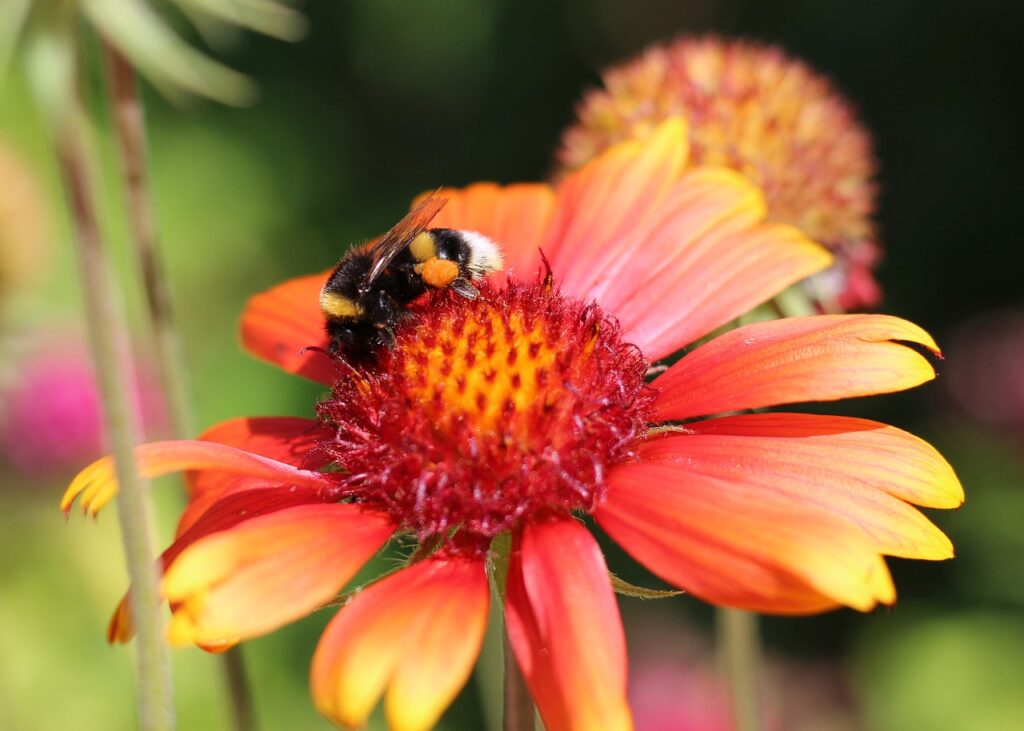
In winter, the care for Blanket Flower varies depending on your climate:
In colder zones (3-5), Blanket Flowers will die back to the ground but can re-emerge in spring. Mulching can help protect the roots from freezing.
In milder climates (zones 6-9), they may remain semi-evergreen, requiring minimal care during winter.
Growing Blanket Flower from seed is a gratifying experience that adds vibrant color to your garden. By following these guidelines for planting, care, and harvest, you can enjoy these hardy and beautiful flowers year after year. Whether you are admiring them in your garden, arranging cut flowers, or collecting seeds for future planting, Blanket Flowers offer an abundance of beauty and joy to any gardener.
These final sections provide guidance on harvesting Blanket Flowers for bouquets, collecting seeds, winter care, and conclude the article. Let me know if you need more information or any adjustments. We can then wrap up your article on growing Blanket Flower from seed.
Last update on 2025-08-06 / Affiliate links / Images from Amazon Product Advertising API
This product presentation was made with AAWP plugin.



